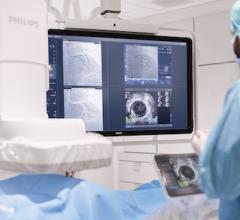
July 20, 2016 — At the end of June, experts from three different medical societies released a new guideline to help optimize lifetime management of patients with transposition of the great arteries, a congenital heart defect, both before and after surgical intervention.
Experts from the American Society of Echocardiography (ASE), in collaboration with the Society for Cardiovascular Magnetic Resonance (SCMR) and the Society of Cardiovascular Computed Tomography (SCCT), reviewed and analyzed a wide variety of scientific evidence, resulting in recommendations for optimal multimodality image monitoring for these patients.
The writing group for this new guideline, titled Multimodality Imaging Guidelines of Patients With Transposition of the Great Arteries, was co-chaired by Meryl S. Cohen, M.D., FASE, from The Children’s Hospital of Philadelphia, and Benjamin W. Eidem, M.D., FASE, of Mayo Clinic in Rochester, Minn. When asked about the need for this new guideline, Cohen commented, “Transposition of the Great Arteries (TGA) is the second most common cyanotic (low oxygen level in the blood seen as blue-tinged lips and nailbeds) congenital heart defect, with more than 1,200 babies born each year in the United States alone. Advances in the diagnosis and management of congenital heart disease have led to a marked improvement in survival of patients with TGA since it was first surgically palliated in the 1950s. However, ongoing anatomic and hemodynamic abnormalities are nearly universal in patients with repaired TGA, necessitating a lifetime of follow-up cardiac care.”
Diagnostic imaging — including echocardiography, cardiovascular magnetic resonance (CMR), cardiovascular computed tomography (CCT) and X-ray angiography — plays a significant role in identifying any abnormalities and assessing their severity, to help cardiologists make clinical decisions about how to best manage these issues. The aims of this document are to describe the role of each diagnostic modality in the care of both preoperative and postoperative TGA patients, and to provide guidelines for a multimodality approach that takes into account various patient- and modality-related considerations. The document also contains over 50 figures, 10 tables and 24 videos, which include imaging protocols, strategies for overall evaluation, reporting recommendations and imaging examples.
Cohen elaborated on the complexity of the issue, stating, “While echocardiography provides the ability to evaluate the majority of anatomic and hemodynamic abnormalities, especially prior to corrective surgery, other modalities such as CMR and CT often provide additional information to answer particular clinical questions, such as right heart size and function, coronary artery abnormalities and perfusion imaging. Patients with TGA are surviving into adulthood, thus various imaging strategies are important over the lifetime of these patients. Clinicians are faced with the challenge of how to best evaluate these patients in a way that minimizes invasiveness, risk and cost while providing the best diagnostic information. This document provides a roadmap for making these decisions.”
In conjunction with the guideline document, Cohen will conduct a live webinar in September 2016 including a question and answer section, which will be available for free to all ASE members and open to all other clinicians for a fee of $25.
The full guideline document is now available on the Journal of American Society of Echocardiography (JASE) website and will be published in the July 2016 print issue.
For more information: www.asecho.org


 December 23, 2025
December 23, 2025 









